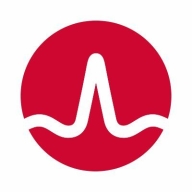


Find out what your peers are saying about BMC, Broadcom, JAMS Software and others in Workload Automation.
| Product | Market Share (%) |
|---|---|
| Automic Automation | 8.1% |
| IBM Workload Automation | 6.2% |
| Tidal by Redwood | 4.7% |
| Other | 81.0% |



| Company Size | Count |
|---|---|
| Small Business | 19 |
| Midsize Enterprise | 14 |
| Large Enterprise | 66 |
| Company Size | Count |
|---|---|
| Small Business | 4 |
| Midsize Enterprise | 1 |
| Large Enterprise | 29 |
| Company Size | Count |
|---|---|
| Small Business | 3 |
| Midsize Enterprise | 6 |
| Large Enterprise | 38 |
Automic Automation offers a web-based GUI for high scalability and flexibility, integrating with platforms like SAP and Oracle. It promotes efficient process automation and supports multiple OS environments, benefiting diverse industries with its robust predictive capabilities.
Automic Automation facilitates process automation and workload management, providing valuable integration with applications like SAP and Oracle. It supports a wide range of operating systems and environments, enabling seamless workflow automation. It features a web-based interface accessible across devices, ensuring scalability and flexibility for complex job automation. Users find its predictive capabilities and platform support instrumental in enhancing operations, although improvements are noted in reporting, cloud integration, and documentation. Licensing and pricing structures also present room for optimization, along with workflow dependency management and smoother upgrade paths.
What are the key features of Automic Automation?Automic Automation sees implementation in industries like banking, finance, and telecommunications, where it automates ERP systems, schedules batch jobs, integrates workloads, and manages file transfers. By supporting SAP, Oracle, and ETL tasks, it aids efficiency and workload automation across varied environments including cloud and mainframe systems.
IBM Workload Automation streamlines scheduling with automation and dynamic workload balancing. It integrates multiple platforms, offering efficient management across diverse systems, enhancing operational productivity.
IBM Workload Automation provides end-to-end control in managing tasks across varied platforms, supporting event-based scheduling and real-time updates. Its intuitive GUI allows seamless scripting and monitoring, facilitating integration with applications like SAP and Oracle. The inclusion of FTA agents ensures efficient local dependency management, while offering versatile scheduling options. Its capability to provide a comprehensive view, manage CPU usage, and meet service level agreements positions it as a valuable tool for large-scale operations.
What are the most important features?Industries such as government, banking, and large enterprises implement IBM Workload Automation for automated scheduling, workload balancing, and batch processing. It assists in migrating from legacy systems to web-based services, integrating with numerous applications, and managing extensive daily job lists. Key functions include offshore management and backend data collection, crucial for effective resource tracking. This adaptability enables organizations to efficiently support operations while scaling workloads as needed.
Tidal Software is a leading provider of enterprise workload automation solutions that orchestrate the execution of complex workflows across systems, applications and IT environments. With a comprehensive portfolio of products and services, Tidal optimizes mission-critical business processes, increases IT cost efficiencies and satisfies legal and regulatory compliance requirements. Hundreds of customers around the world count on Tidal for modernizing their workload automation and driving their digital transformation. Tidal Software is headquartered in Chicago with offices in Houston, London, Minsk, Belarus and Chennai, India. For more information, visit tidalsoftware.com.